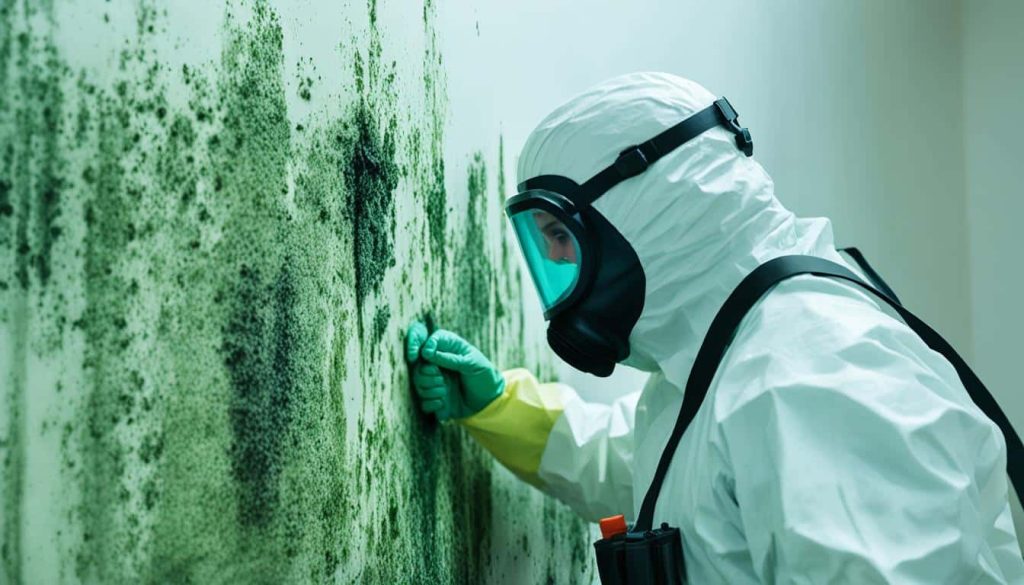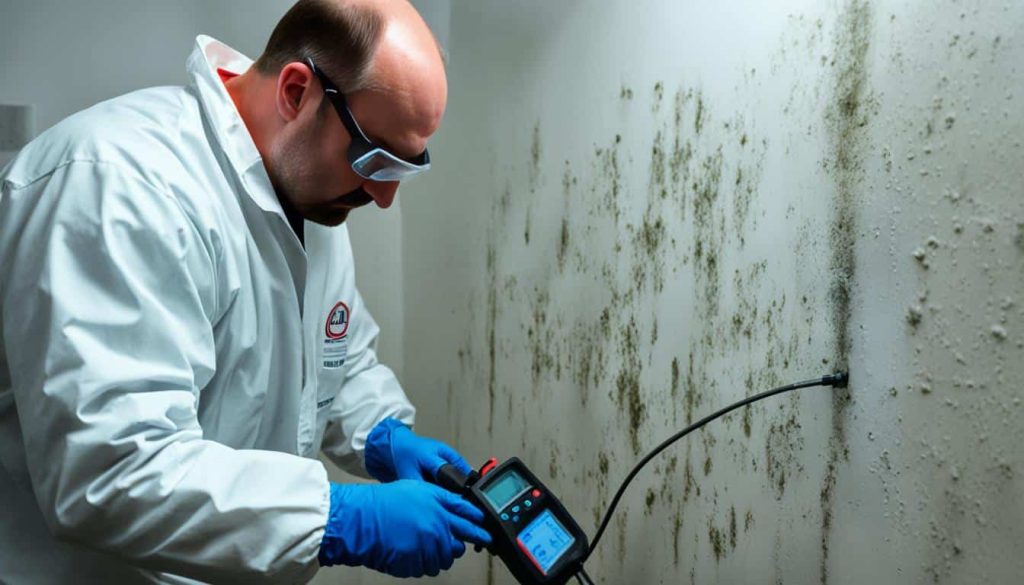Mold is a common household problem that can have serious health and structural implications if left untreated. One of the earliest signs of mold growth is often an unpleasant odor. But What Does Mold Smell Like? The answer is not straightforward, as mold can produce a wide range of smells depending on various factors. Understanding these odors can help in the early detection of mold and prevent its spread.
Array of Solutions, a trusted name in mold removal in Greenville South Carolina since 2007, stands ready to tackle your mold woes. With our expert mold inspection Greenville services and EPA-Registered credentials, we’re equipped to detect, remove, and prevent mold growth in your home or business.
Table of Contents
The Smell of Mold:
The smell of mold is often described using various terms such as musty, earthy, or stale. However, these descriptors can vary greatly depending on the individual’s sense of smell and the type of mold present. Some common descriptions include:
- Musty: This is perhaps the most common descriptor for mold. A musty smell is often compared to the scent of damp, decaying organic matter, such as wet wood or fallen leaves.
- Perfumy: In some cases, mold can emit a sweet or perfumy odor. This can be misleading, as it may mask the more unpleasant smells typically associated with mold.
- Dirty or Old Basement: Many people describe mold as smelling like an old, unused basement. This scent is typically due to the presence of moisture and decaying materials.
- Farm-like: Some molds produce a smell reminiscent of a barn or farm, often earthy and slightly pungent.
- Rancid or Rotten: Certain types of mold can produce a smell similar to rotting food or garbage. This is usually a sign of more severe contamination.
These varying descriptions highlight the fact that mold does not have a single, uniform smell. The odor can change depending on factors such as the type of mold, the materials it is growing on, and the environment in which it is found.

The Science Behind Mold Odors: MVOCs
The distinct odors associated with mold are caused by microbial volatile organic compounds (MVOCs). MVOCs are gases produced by mold as it metabolizes and reproduces. These compounds are released into the air and are responsible for the characteristic smells we associate with mold.
- MVOCs Explained: MVOCs are organic compounds with low molecular weight, meaning they easily evaporate into the air. As mold grows and breaks down organic material, it produces these compounds as byproducts. There are over 200 different types of MVOCs, each with its own unique smell. The specific MVOCs produced can depend on the type of mold, the substrate it is growing on, and the environmental conditions.
- Common MVOCs: Some of the most common MVOCs include alcohols, ketones, aldehydes, and esters. Each of these compounds can contribute to the overall odor of mold. For example, some alcohols produced by mold can give off a sweet, perfumy smell, while ketones and aldehydes may contribute to the musty or earthy scents.
- Detection Through Smell: The human nose is incredibly sensitive to MVOCs, often detecting them at very low concentrations. This makes smell a valuable tool in identifying the presence of mold, even before visible signs appear. However, the specific smell of mold can vary greatly depending on the combination of MVOCs present.
The Role of Environment in Mold Odors
The environment in which mold is growing can also influence its smell. Factors such as humidity, temperature, and the type of organic material the mold is feeding on can all affect the odor produced.
- Humidity and Temperature: Mold thrives in damp, humid environments. High humidity can intensify the smell of mold, making it more noticeable. Similarly, temperature fluctuations can cause variations in the intensity of the odor. Warmer temperatures may increase the rate at which mold produces MVOCs, leading to a stronger smell.
- Substrate Material: The type of material on which mold is growing also plays a significant role in the odor. For example, mold growing on wood may produce an earthy, musty smell, while mold on food may give off a rancid, rotten odor. Materials such as drywall, carpet, and insulation can each contribute to different scents depending on their composition and state of decay.
What Does Mold Smell Like Matter?
The smell of mold is not just an unpleasant nuisance; it is a sign of active mold growth and potential health risks. Inhaling MVOCs can cause a range of health issues, particularly in individuals with respiratory conditions or allergies. Symptoms can include headaches, dizziness, fatigue, and irritation of the eyes, nose, and throat. For individuals with asthma, exposure to mold odors can trigger or worsen symptoms.
Detecting mold by smell is an important first step in addressing a mold problem. If you notice a persistent, unusual odor in your home or business, it may be a sign of hidden mold growth. In such cases, it is crucial to take action quickly to identify and remediate the source of the smell.

Conclusion
Mold odors are a complex and varied phenomenon, influenced by the specific type of mold, the environment, and the materials it is growing on. These smells are caused by MVOCs, a group of compounds produced during the mold’s metabolic process. While the smell of mold can be unpleasant, it serves as an important warning sign of mold growth and potential health hazards.
If you detect a moldy odor in your property, it’s important to investigate further and take appropriate action. Professional mold inspection and remediation can help eliminate the source of the odor and prevent further health risks.
